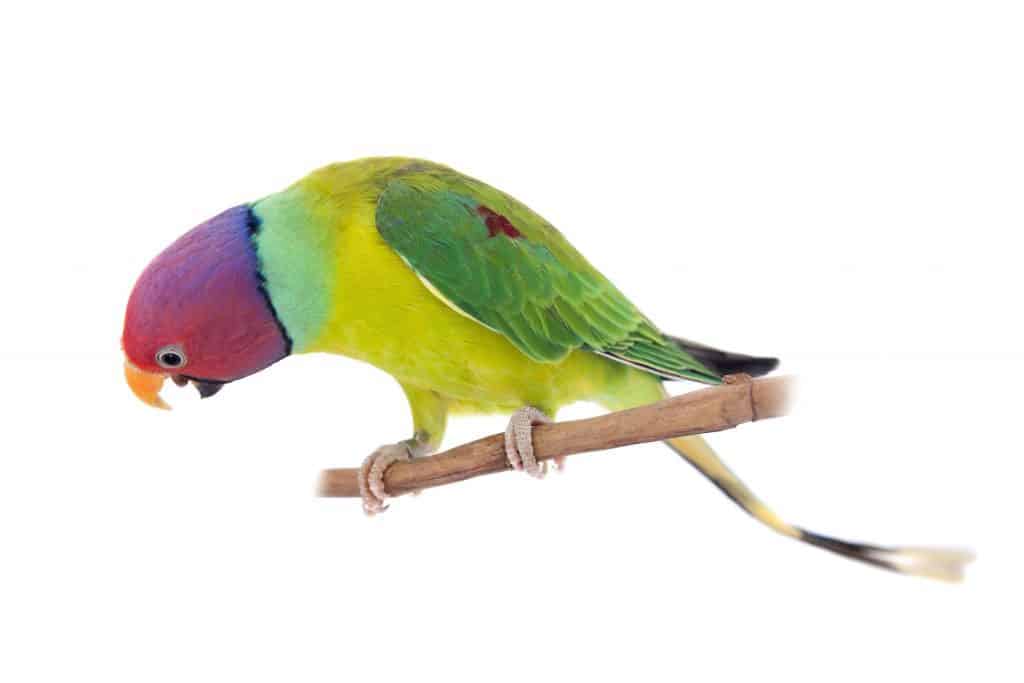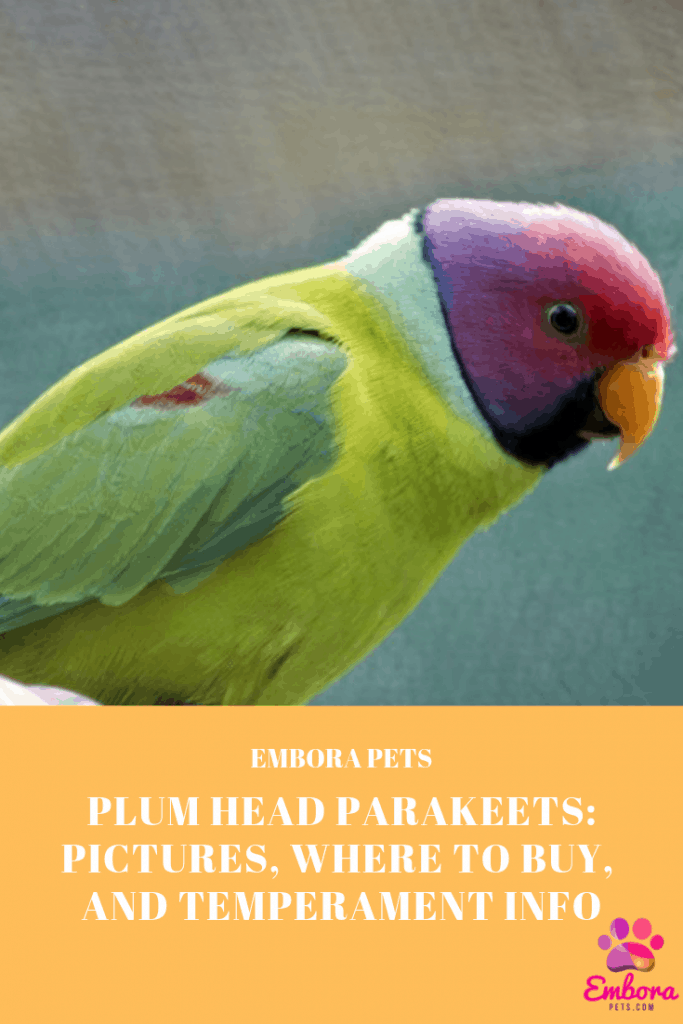Plumheaded Parakeets: Pictures, Where to buy, and Temperament info

It is not easy to be able to know everything there is about a plumheaded parakeet. While they are small creatures, they should not be treated as basic or simple. They are just as valuable as parrots, and if you are considering purchasing one, here is a complete guide about them.
Origin, Color, and Markings
History & Origin
The plum headed parakeet is also called the ‘plum headed parrot’. As
The plum headed parakeet came from India, Pakistan, Sri Lanka, and Bangladesh. In the wild, they are usually found in the forested areas of the world.
They are thought to be a hybrid of plumb-headed parakeets and the slaty-headed parakeet.
The numbers of these birds have been declining in recent years due to their dwindling habitat. The
Where to Buy Them
A single plumheaded parakeet can cost around $200-$250. It can range depending on the breeder you decide to go to.
Purchasing a
A way to figure this out is to simply check online reviews to get extra feedback. You can also ask the breeder to see the other birds so you can make sure they are being kept in a clean environment.
You can check to see that the birds aren’t overcrowded in the cage or on their perches. Be sure to also look at the fruits and vegetables that the breeder has out in the cage. Make sure that
Plumheaded Parakeets as Pets
Parakeets, also known as Budgies, can be the perfect pet for most people. They are one of the most popular and common pets to have around the world!
Since parakeets are quite small in size, they are easy to care for. If you are one who happens to enjoy having smaller animals as pets, then this bird is ideal for you.
Not only are parakeets small in size, which makes
Most find it cheaper to have a parakeet since they do not eat as much are larger birds and you do not have to spend a large amount of money on a huge cage to keep them in.
One small con to this animal is that they may require some extensive vacuuming around the perimeter of their cage. They tend to throw their food or seed around their cage, and that usually make its way out the cage as well.
Their Temperament

The temperament of a plum-headed parakeet is quite friendly. They are lovable and affectionate creatures when treated kindly and with respect. They love to be able to explore their surroundings as well as play with other birds that are compatible with their size and kind.
Since they are affectionate creatures, they thrive on time spent with their owners. They in fact look forward to the social time set aside with their caretakers.
If you want to be able to form a close bond with your plumheaded parakeet, you will need an ample amount of time to be able to bond with them in their environment.
You may also want to keep them as the only bird in their cage, since parakeets can lose interest in humans if they happen to have other parakeet company around them often.
Parakeets can also be taught to do some very cool things since they are quite the intelligent creature. They can be taught to whistle some neat tunes, and even talk!
Despite their small size, they are big on brains and can be just as intelligent as any larger bird.
With the proper training, they can be the most delightful addition in your life and family! They are filled with
These creatures can bond with you as if you were their best friend (you can reach that with quality time spent with them).
Their Health & Average Lifespan
Health of a Parakeet
Parakeets tend to suffer from the same illnesses or health issues as Parrots. But there can also be some unique cases that pertain to just the Parakeet.
They can be exposed to goiters, which is caused by a iodine deficiency.
Some common diseases that your parakeet can be susceptible to are:
- Polyoma
- Sarcocystosis
- Aspergillosis (fungal disease)
- Bacterial infections (pneumonia)
- Psittacosis
If they are fed a seed diet, they can develop tumors and even come to suffer from Psittacosis (also known as parrot fever).
Beware of scaly mites as well. These can affect your
If your precious pet falls victim to any of these illnesses, take them to your local veterinarian at once so they can receive the treatment they need.
Their lifespan
The life span of a
However, the average lifespan is closer to 7 years, since
Exercise Needed
One of the main sources of exercise a parakeet can receive is through free flying. In fact, it is critical for them to be able to free fly for several hours a the day.
Make sure that the room is safe from any dangerous or potentially harmful objects when you do have a
A great way for your parakeet to enjoy their time spent outside of the cage is by having a large house plant. These can double as their very own playground.
When your parakeet is not having that free-flying time, try to place a few toys in their cage. This will provide some stimulation to them that can keep them busy during all hours in the day.
Try to change out the toys every couple of months. This will help prevent them from growing bored.
What to Feed Your Parakeet
Contrary to popular belief, parakeets do not simply live off of a seed diet. They actually have other nutritions they will need to be fed in order to keep a healthy lifestyle and live a long life.
If you travel to your local veterinarian, they might recommend that you provide your parakeet with a diet of different kinds of vegetables as well as a diet of pellets.
Pellets can contain important vitamins and other additional supplements that they may not be able to receive from a plain, seed diet.
Along with vegetables and pellets you can also give parakeets fresh fruit, leafy greens, root vegetables, and grains!
Be aware, just because parakeets are able to tolerate seed better than other animals does not mean that should be their only source of sustenance.
Giving your parakeet an all seed diet can be quite dangerous and can even kill them.
Related Questions
Do Parakeets get lonely? If you happen to be out of your home for more than a few hours a day your parakeet can become lonely. They are social creature so they crave that affection from owners. Consider purchasing another parakeet to keep them company.
Should parakeets be covered at night? Covering the cage provides some heat to your parakeet, so you will want to cover their cage to they can sleep comfortably at night. Be sure to uncover the cage gradually in the morning.
Do parakeets do better in pairs? Human companionship can be enough to keep your parakeet happy, but if you are unable to provide that, then another parakeet may help your bird feel less lonely.

